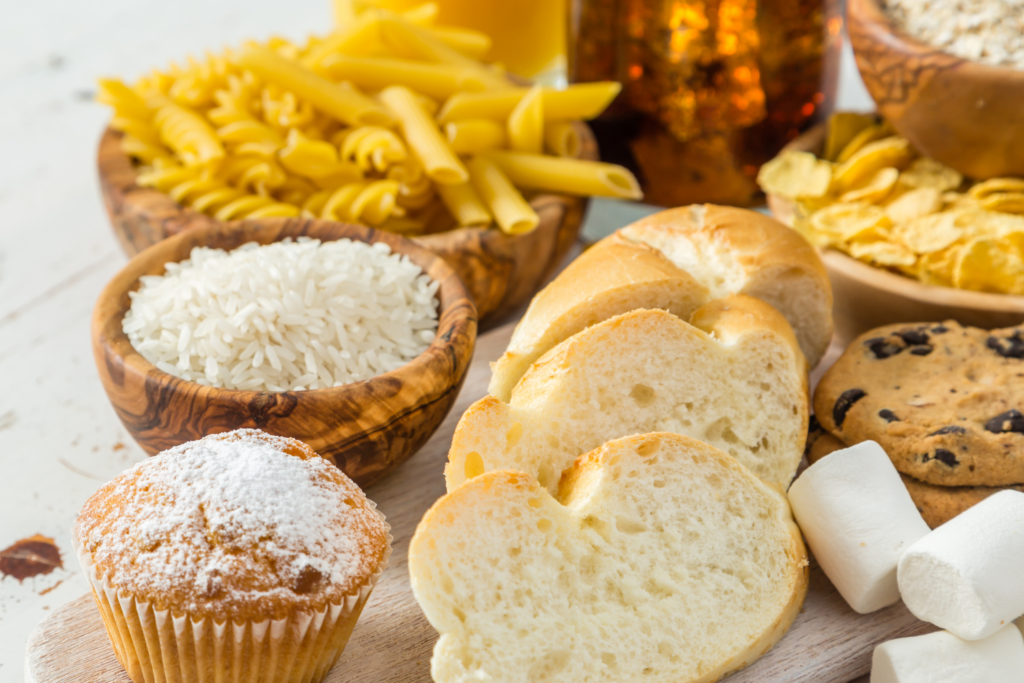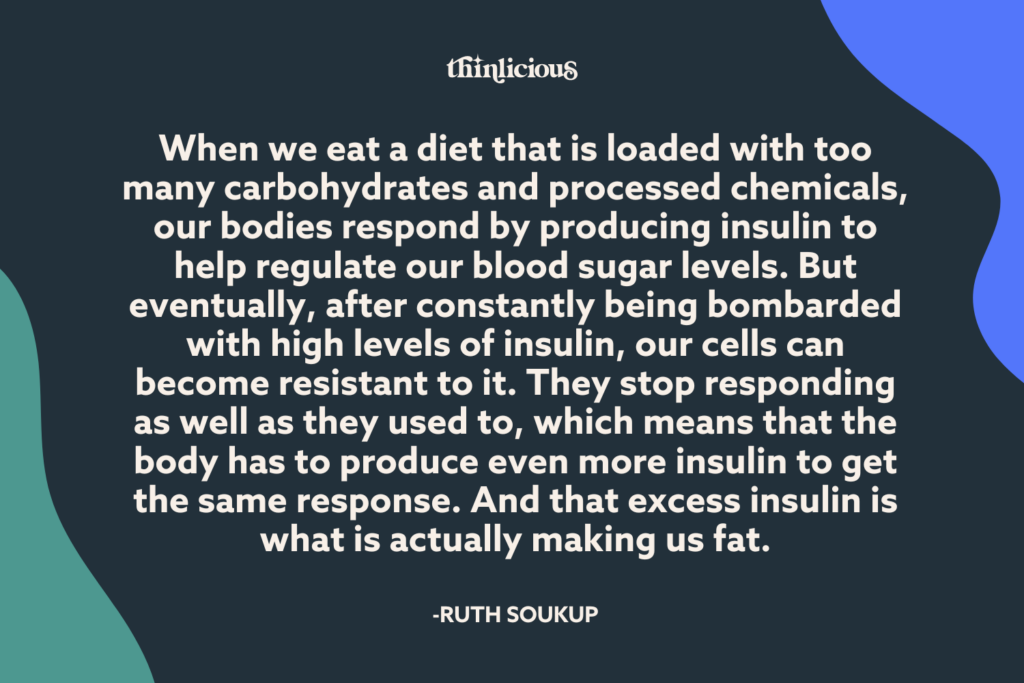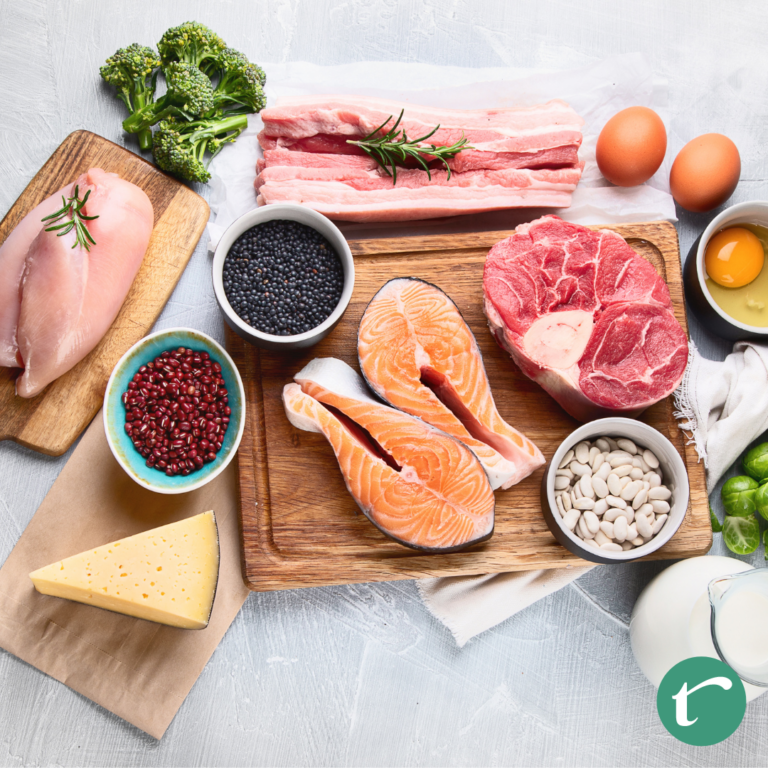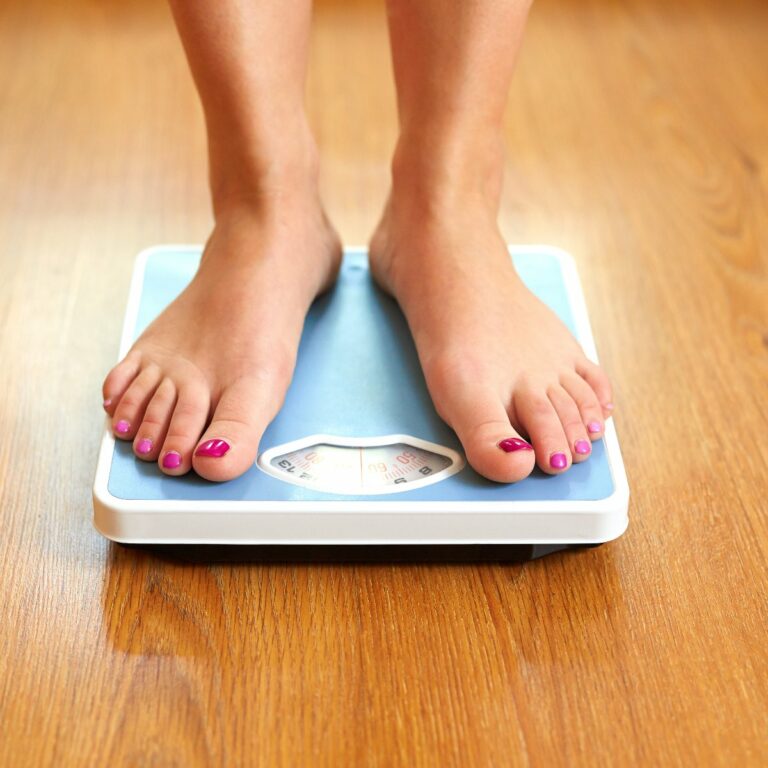Here at Thinlicious we talk a lot about how to lose weight and improve your health.
And it’s all pretty important, right?
But have you ever wondered WHY we even need to talk about it in the first place?
Why is obesity such a huge problem?
Are you ready to lose weight and heal your body for life (without dieting, drugs, or making yourself miserable)?

Our free on-demand video training will walk you through how to make this THE year you set health goals…and keep them.
Why are 80% of adults in the US now considered overweight, when that wasn’t the case 100 years ago, or even 50 years ago?
Why DO we get fat?
And why are we getting fatter?
What’s actually happening?
That’s EXACTLY what we’re diving into today, and I’ll warn you right now that this is one of those nerdy episodes where we dig a little deeper into the science and into the research.

But it’s important so bear with me, because your mind is about to be blown.
You might not know this about me, but when I get focused on something, I tend to be a little bit obsessive. And so I got obsessive with the research. I read everything I could get my hands on—books and journal articles and academic studies.
And one of the first books I read—the book that I would say is probably the main thing that led me down the rabbit hole of research that eventually helped me not only lose more than 40 pounds, but also led me to starting Thinlicious and creating the Thin Adapted System and starting my podcast and all the other things, was a book by Gary Taubes called “Why We Get Fat And What to Do About It.”
And hopefully someday I’ll be able to track him down and get him as a guest on my podcast, because everything he has to share is so incredibly in-depth and well-researched, but in the meantime, if you’re looking for something to read that will really open your eyes to what’s happening with your body, then I highly, highly, highly recommend getting that book. And we’ll also make sure to link to it in the show notes so you can find it easily, but again, it’s called Why We Get Fat by Gary Taubes.”
But all lot of the stuff I want to talk about today is stuff he covers in that book, but obviously in a lot more detail than we can cover in one blog post.
And we’re going to dive into all of it in just a second, but really quickly I want to take a quick second to remind you that if you’re new to this blog and to the Thinlicious brand, and you’re looking for a better way to lose weight and get healthy that actually works, then you should definitely consider joining me for my next free live workshop.
I host these pretty regularly, and it’s a great chance to learn how our system works and how to get started, but it’s also an awesome opportunity to ask all your questions and get answers in real time. And again, it’s totally free to join but you do have to register, so you can go do that HERE.
Okay, so with that out of the way, let’s go ahead and dive into our topic of the day—WHY we get fat—what’s actually happening inside our bodies to make us gain weight and cling to fat, why it’s so hard to lose weight once we do gain it—and of course, what that means for you.
What We’ve Been Told
But to start, let’s talk for a minute about what we’ve all been told—pretty much our whole lives—about weight loss and weight gain.
Because most of what we’ve been told is actually a lie.
It might have been a lie that was told with good intentions, I don’t actually know. Despite everything you’ve heard me say on this blog, I don’t actually believe EVERYTHING is a conspiracy theory.
That said, it’s the big lie that just won’t die.
And it all goes back to the laws of thermodynamics, which says that energy can neither be created nor destroyed, only transferred or converted. Or, as the New York Times put it in more simple-to-understand terms, “those who consume than they expend will gain weight. There’s no getting around the laws of thermodynamics.”
And so what we’ve been told—the big lie—is that this law applies to our bodies when it comes to weight loss and weight gain. That if we eat more calories than we burn, the excess will be stored as fat in our bodies, and if we eat fewer calories than we burn, our body will use up the fat stores for energy.
It’s simple math, right? And it sounds so logical. It seems like such basic common sense that it MUST be true.
How could anyone argue differently?
And so that is what we’ve been told, over and over again.
That weight loss is simple. That it’s just calories in and calories out.
That if you’re overweight, it’s because you’re eating more than the energy you exert.
And if you can’t actually stick to a diet or force yourself to eat less and exercise more long enough to lose weight, then it’s because you’re weak or lazy or don’t have enough willpower.
So to sum it all up, what most of us have been told our whole life is…
- Weight loss is just basic physics—calories in and calories out.
- Your inability to eat less than you expend in energy is mostly your own fault.
And despite the fact that for most of us, our lived experience with trying and failing at diet after diet would seem to indicate that there might actually be something else going on, this is what most people continue to believe, and what most experts—our doctors, the media, the FDA, the National Institute of Health—continue to tell us is true.
What’s Actually Happening
But what if it’s not?
The truth is that our bodies are much more complex than a simple math equation. And while it might seem like common sense that eating less and moving more would lead to weight loss, the science shows otherwise.
Our body is a complex system
The first thing that’s important to understand is that the law of thermodynamics applies to SIMPLE SYSTEMS. A simple system is defined as one that is closed, isolated and in equilibrium.
And our bodies are anything but simple systems.
Our bodies are actually composed of a whole bunch of incredibly COMPLEX systems that are constantly interacting and adapting to each other, including our endocrine system, our nervous system, our digestive system, our cardiovascular system, and more.
And while it’s probably been a while since you took high school anatomy class, you probably remember at least a little of how intricate these different systems are. After all, that’s why the class was so freaking hard!
But all these systems are influenced by a variety of factors, including genetics, hormones, environment and even social and emotional factors. All of these systems work together to regulate everything from our metabolism to our appetite to our energy levels.
And not only that, all of these complex systems in our body require a HUGE amount of energy to function each and every day. The energy required to keep our heart pumping and blood flowing through our veins and our brain and other organs functioning is MASSIVE. It’s literally thousands and thousands of calories that we are burning every single day, just to stay alive, EVEN if we are completely sedentary.
In fact our energy requirements every day are so high that our body actually has to CREATE additional energy to keep everything going. It’s a process that happens in our mitochondria, and it’s called de novo lipogenesis.
Basically, our body takes other nutrients—like carbohydrates and protein—and converts them into fat to be stored for future use. And this process is actually regulated by a hormone called insulin, which you may have heard me talk about before.
The important thing to understand here is that OUR BODIES ARE NOT MATH EQUATIONS. We cannot simply just “eat less and move more” and expect the laws of thermodynamics to apply in the same way they do to simple systems.
Because when we restrict our food intake or increase our activity levels, complex processes kick in within our bodies that are designed to keep us alive and functioning. Our body adapts and slows down certain functions while ramping up others in order to maintain balance.
So that’s the first thing you really need to understand—just how complex the body is, so complex that the idea that “calories in and calories out” could explain it is almost laughable.
The Laws of Obesity
The second piece that I think is important to talk about is something that Gary Taubes calls the Laws of Adiposity, which is really just a fancy way of saying the laws of obesity. In his book, he argues that these three laws of obesity are what actually explain weight loss and weight gain far more realistically than the laws of thermodynamics.
So what are these laws?
The first law of obesity says that body fat is carefully regulated, almost exquisitely so, by the body.
And what he means by that is that “our bodies, when healthy, are working diligently to maintain a set amount of fat in our fat tissue—not too much and not too little, and that this fat, in turn, is used to assure a steady supply of fuel to the cells.”
Basically, our bodies WANT to be at the right weight, with the perfect amount of fat. They are designed to maintain a stable weight. It’s why you don’t see overweight animals in the wild.
So if that’s true, then why are so many of us fat?
Well that brings up law of obesity #2, which is that obesity can be caused by a regulatory defect so small that it would be undetectable by any technique yet invented.
And what that really means is that even though our body’s natural preference is to maintain the right weight with the perfect amount of fat, there are either genetic or environmental factors that can prevent that from happening.
And then there is Law of Obesity #3—that whatever genetic or environmental factor is making us fatter and heavier will ALSO cause us to overeat.
Did you catch that? Because this is REALLY important!
We’re not fat because we eat too much, we EAT too much because we’re fat.
And we’re FAT because of whatever genetic or environmental factor is disrupting our body’s natural preference to maintain a steady weight.
Is your mind blown yet?
Because this is kind-of huge. And also totally opposite of everything we’ve been led to believe.
The Big Shift
So the next big question should be, if this is true, if there is some sort of genetic or environmental factor that is disrupting our body’s natural ability to maintain a steady weight, WHAT IS THAT FACTOR that’s making so many of us fat, especially in the past 60 years when levels of obesity have skyrocketed.
And when I say skyrocketed, I mean it.
For the first half of the 20th century, obesity rates in the US were relatively stable.
And then all of the sudden, in the 1960s, people started getting much fatter. If you look at a line graph, it’s like a hockey stick, with a huge spike starting around 1965. Obesity rates in the United States are now more than TRIPLE what they were in 1960, and they just keep going up.
And that means that the next logical question is to ask yourself what changed?
What changed in the 1960’s to so dramatically change the trajectory of obesity in this country?
How did we all get so fat at the same time, especially when our bodies are designed to keep us at a stable, healthy weight?
Well, there were a few things, but it can all basically be boiled down to the fact that in the late 1950’s and early 1960’s, there were a few studies—the most famous being the 7 Countries Study conducted by Ancel Keys—that blamed heart disease on cholesterol and saturated fat.
Many of these studies were specifically commissioned and paid for by the food industry—and this is not a conspiracy theory, it is a well documented fact—and they have all long since been disproven or debunked as basically junk science.
But the damage was done, and the effects have been catastrophic.
Because the prevailing wisdom of the FDA and the American Heart Association and even all the medical schools were based on the results of these studies, which basically advocated for a diet high in carbohydrates and low in saturated fat.
People were told to avoid things like eggs and lard and butter and red meat, and instead rely on “heart healthy”—and I say that in quotation marks” vegetable oil and margarine and low fat whole grains.
Fat, we were told, was the enemy, and should be avoided at all costs.
A healthy diet, we were told, in the form of a food pyramid, is one that’s full of carbohydrates and a moderate amount of fruits and vegetables, with a minimal amount of meat and fat.
That’s what changed, and it’s only gotten worse in the years since.
Ultra-processed foods, most of which are loaded with carbohydrates, toxic preservatives, and vegetable oils now make up more than 60% of the average american diet.
But of course, that still doesn’t explain WHY we get fat, does it?

The Big Domino: Insulin Resistance
So why is a diet full of carbohydrates and processed foods and vegetable oil so bad for us?
What is it actually DOING to our body?
The answer probably won’t surprise you if you’ve read this blog for a while, because it is something we’ve talked about many times, and will probably KEEP talking about because it’s so critically important to understand.
It’s the big domino.
INSULIN RESISTANCE.
When we eat a diet that is loaded with too many carbohydrates and processed chemicals, our bodies respond by producing insulin to help regulate our blood sugar levels.
But eventually, after constantly being bombarded with high levels of insulin, our cells can become resistant to it.
They stop responding as well as they used to, which means that the body has to produce even more insulin to get the same response.
And that excess insulin is what is actually making us fat.
Because INSULIN is the hormone that tells your body whether to store fat or let it go.
When your insulin levels are elevated, your body can not release the excess fat the way it is designed to do, the way that it naturally WANTS to function.
Essentially, it’s sending the signal that your body is in crisis and needs to store fat in order to ensure your survival in case of famine.
And until you fix this, until you REVERSE the insulin resistance and get your body metabolically flexible again, all the dieting in the world won’t really help.
In fact, in many cases, it’s just making things worse.

The Vicious Cycle
Because this excess insulin also has a domino effect on our hormones, causing imbalances and disruptions throughout the body.
For example, high levels of insulin can cause an increase in estrogen which leads to water retention and bloating, making us feel even heavier.
It can also result in higher levels of cortisol, the stress hormone that is closely linked to belly fat.
It affects our thyroid, which in turn slows down our metabolism even more.
And it affects our gut health, creating inflammation throughout the body that is linked to chronic pain, chronic illness, and even cancer.
Not only that, but insulin resistance can lead to increased hunger and cravings, making it nearly impossible to stick to a restrictive diet.
So you can see how this becomes a vicious cycle.
We eat processed foods high in carbohydrates and vegetable oils, our body responds with excess insulin, which leads to weight gain and hormonal imbalances, causing us to feel even more desperate for quick-fix diets that only make things worse.
And THAT is why we’re fat.
What This Means For You
It’s kinda crazy right?
And when I think about how LONG I struggled with my weight, and about how many STUPID useless diets I went on, and how many YEARS I spent making myself totally miserable and blaming myself for not being able to fix this problem that I thought was just my own lack of willpower, it really does make me mad.
Honestly, it’s why I’m SO FREAKING PASSIONATE about what we do, and about this work that we’re doing with Thinlicious, and the lives that we are changing through our Thin Adapted System, which is all based in understanding the basic principles that I just laid out for you today.
Because to me, even though I’m helping women reach their weight loss goals, this really isn’t just about weight loss.
It’s about FREEDOM.
It’s about knowing that we’ve all been lied to for YEARS, and that those lies have been DEVASTATING for our health, but also about knowing that you actually DO have the POWER to DO something about it!
You don’t have to live this way.
You don’t have to feel like crap all the time.
You don’t have to be ashamed of your body and the way you look.
You don’t have to chronically exhausted.
You don’t have to be in pain.
You CAN get healthy.
You CAN lose the weight.
You CAN reverse your insulin resistance and balance your hormones and heal your gut and get your metabolism working the way it is designed to work again.
It’s possible. I know it’s possible because I’ve done it.
Not only that, I’ve now helped THOUSANDS of other women do it too.
Without dieting. Without drugs. And without making yourself miserable.
There is a better way.
And it’s actually pretty simple.
You eat the right foods, the ones that will get your hormones out of crisis and help you reverse insulin resistance.
Foods that are low in sugar and processed carbohydrates and high in healthy fats and nutrient dense protein.
Then you heal your gut and build your lean muscle mass and change your mindset around food by surrounding yourself with people who get it.
That’s what we do in our TAS program, and that’s why it works.
But it really starts by understanding what’s actually happening in your body, and WHY it has been so hard, and WHY everything you’ve ever tried up until now hasn’t worked.
And hopefully after today’s episode, that’s a lot more clear.
OOOOF friends, I know that was a very nerdy, super dense episode, so that’s everything I’m going to leave you with today.
But I hope it was helpful and eye-opening, and if you want to go deeper, I definitely recommend checking out that book I told you about—Why We Get Fat by Gary Taubes.
In the meantime, be sure to share this episode with anyone you think would find it helpful, and if you loved it, please do me a solid and take a minute to leave a review on apple podcasts or spotify or wherever you like to listen!
And then I will see you back here very soon for another new episode!
What if you could actually take control of
your health in just 10 days?
It’s not your fault you can’t lose weight as a woman over 40 even though you’ve likely tried literally everything. Your metabolism probably feels broken and your hormones are likely all out of whack.
But you can fix it all with ONE simple change: eliminate sugar. We make it super easy with daily lessons teaching you the science behind what makes us gain weight in our midlife and beyond! Are you ready to get started now?














